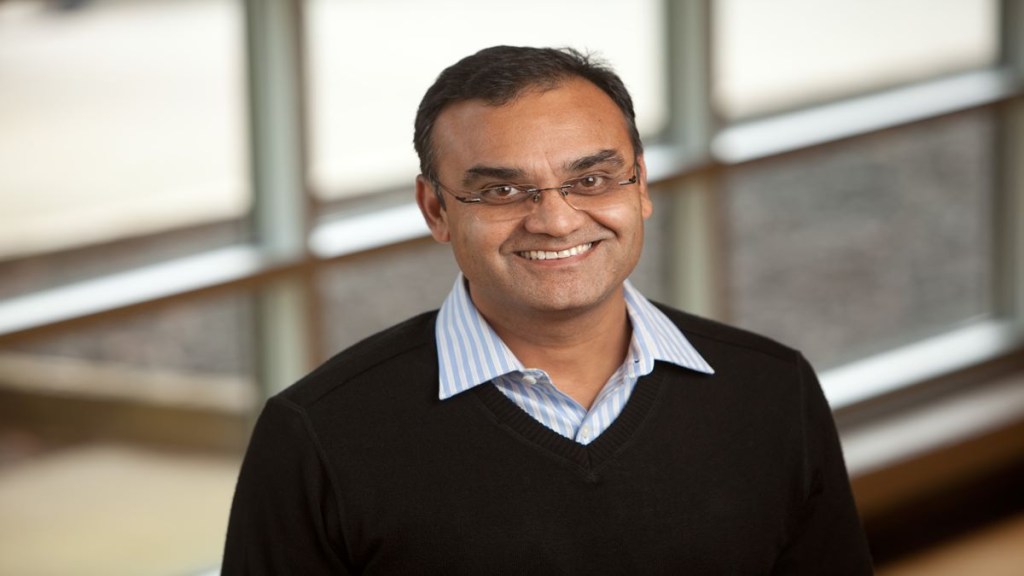With advances in digital technologies like artificial intelligence, VR/AR, 3D-printing, robotics, or nanotechnology, the future of healthcare is taking an interesting shape. The Indian healthcare sector has taken several crucial steps with the help of digital technology.
According to experts, the integration of the Internet of Medical Things (IoMT) has transformed healthcare, allowing medical practitioners to monitor the health information shared through multiple sensors including wearable devices in real time.
In an email interaction with Financial Express.com, Arvind Vaishnav, Vice President, Head of Philips Innovation Campus, Bengaluru talked about Philips’ technology and its role in the healthcare sector, public-private partnerships, role of IoMT to improve patient outcomes among others. Excerpts:
What is India’s status with respect to technological advancements in the healthcare sector? What measures should we undertake to further advance our country to become a healthcare leader globally?
India is making swift and well-directed progress towards a healthier future in healthcare, which is characterized by a strong focus on technology and patient-centered approaches. Additionally, like various other sectors, the healthcare industry in India is also embracing digitization to fortify its healthcare infrastructure. Take for example, Ayushman Bharat Digital Mission (ABDM), that aims to be the backbone in supporting the integrated digital health infrastructure of the country. Other initiatives, integral to ABDM, like eSanjeevani also holds enormous potential.
With able partnerships between the public and private sectors, India’s healthcare initiatives will witness much more inclusive, accessible, and affordable care. The longitudinal availability of data made available through this interoperable platform can not only reduce cost of care but also make sure early diagnosis and prevention of diseases. Moreover, the international investment in Indian healthcare startups is a positive sign for the growth of the Indian healthcare sector. This investment will help Indian startups to develop innovative solutions that can improve the quality and accessibility of healthcare in India. Over the last few years, we have been demonstrating how our technology prowess can be unleashed to challenge the frontiers of the digital revolution sweeping across industries. The world is witness to this. Healthcare will be no different.
What has been Philips’s role in the healthcare sector of the country? What are your plans for the current financial year?
At Philips, we have been driving meaningful innovations with the aim of realizing the Quadruple Aim: improving the patient experience, achieving better health outcomes, improving the staff experience, and lowering the cost of care. Our commitment to India is no different. The Philips Innovation Campus (PIC) located in Bangalore plays a crucial role in driving Philips’ digital transformation, not only within India but also on a global scale. The team, deeply integrated within the healthcare ecosystem and reflecting Philips’ businesses worldwide, has evolved to deliver inventive and comprehensive end-to-end solutions.
We are seeing healthcare providers leveraging automation, enabled by AI, to increase efficiencies and augment the capabilities of staff. For example, radiology departments can increase productivity with healthcare technology that leverages AI to enable faster scan times with higher resolution in imaging modalities like MR, even with patients who are in pain or struggle to hold their breath during an exam. As a result, radiology departments can scan more patients in a day while supporting diagnostic confidence and improving the patient experience at the same time. Similarly, AI can improve productivity and reduce intra-user variability in ultrasound use, with automatic measurements that save the healthcare professional tedious manual work while keeping them in control of diagnostic decision-making.
Furthermore, the change in healthcare consumer behavior, where they increasingly seek instant and swift solutions through mobile devices and other easily accessible technologies, is a growing trend that is driving the adoption of technology in the healthcare ecosystem. The cloud is another critical technological enabler for creating truly connected and integrated IT infrastructures in healthcare. Such infrastructures need to be highly secure and highly scalable, allowing healthcare providers to rapidly adapt to fluctuating demand without having to worry about data security. Cloud adoption in healthcare has traditionally lagged. However, in recent years we have seen fast-growing acceptance and adoption in many parts of the world – a trend we expect to continue in 2023.
According to you, how Public-Private Partnerships (PPP) can help in enhancing innovations in healthcare? Is Philips also involved in such partnerships?
India, as a developing nation, has made significant progress in healthcare and we have a long way to tread. In order to deliver more efficient and affordable healthcare, we need to devise solutions to close a few gaps as we move ahead. The issues prevalent in healthcare include lack of funds, high population density, difficulties in access to healthcare in rural areas, shortage of skilled healthcare providers leading to a skewed doctor-patient ratio. Collaborations between the public and private sectors in the form of Public-Private Partnerships (PPP) can potentially alter the country’s healthcare system for greater good by bringing best of both the worlds. This collaboration becomes even more crucial for India, given its rapid progress in developing a digital health infrastructure. The synergy between the two sectors can significantly contribute to the greater good of the nation’s healthcare landscape.
India’s private healthcare system has a number of significant advantages, such as efficient service delivery, availability of consistent capital and investments, and access to latest technology. Over the past few years, the private healthcare sector has made great advances and has established itself as a partner to the Indian government in efforts to expand access to healthcare nationwide. Public healthcare sector, on the other hand, has an extensive network of healthcare infrastructure and a continual flow of needy patients, which can be served even better with the infusion of emerging technologies. These traits make PPPs mutually advantageous for both systems as the requirements and qualities are compatible to each other.
, especially in the tier-2, tier-3, and aspirational cities, that can close the accessibility gap for all by making healthcare more affordable, accessible and durable.
How COVID-19 has influenced and driven the technological innovations in healthcare sectors? How can this trend be leveraged for other disease segments?
The COVID-19 pandemic has significantly sped up the deployment of digital health technology and given more momentum to the long-term trends that were already well under way. As per a report by RBSA Advisors, the adoption of technology in healthcare post pandemic has brought a quantum shift in the sector and thus the health-tech sector is expected to grow at a 39% compounded annual growth rate (CAGR) over FY2020-FY2023, reaching US $50 billion by 2033. As healthcare professionals work to create resilient and future-proof healthcare systems, digital transformation is now at the forefront of their minds.
The adoption of telehealth and remote patient monitoring went from being a curiosity to a need due to the pandemic. The acute staff shortage also resulted in the application of informatics and data analytics as care providers needed to strengthen data sharing and care coordination. For the purpose of guiding clinical and operational decision-making in real time, centralised hubs or command centres were established.
Such challenges accelerated the adoption of emerging technologies like artificial intelligence (AI), machine learning (ML), informatics, automation among others, speeding the digital and technological innovation in the healthcare industry which is only going to advance going forward.
The trend of digital innovations in healthcare will be greatly leveraged in major segments of healthcare. For example, Internet of Medical Things (IoMT) is expected to evolve the process of digitally collecting data and turning it into insights for healthcare organizations. One of the other emerging technologies like AI-powered wearables will enable people to monitor their wellbeing and create a shift from hospital to home-based care through telehealth. Moreover, ML will be increasingly used to leverage large data sets through predictive analytics. In tandem, healthcare informatics over years have also helped health institutions connect various sites of care and free data from silos to generate valuable insights. I foresee informatics to only grow in both prominence and numbers since healthcare leaders are looking at increasing operational efficiencies and developing new care delivery models.
How can IoMT be used to improve the quality of life for people with chronic diseases? How is Philips involved in this area?
With the aid of clinical expertise and AI, the IoT makes it possible to capture and integrate data in real-time as well as over time from a variety of medical devices, turning that data into insightful information. The Internet of Medical Things (IoMT) has enormous potential to raise the quality of life for people with chronic diseases as it enables the real-time integration of data from various medical devices, to convert into actionable insights with the help of AI and data analytics.
Consequently, healthcare can become more personalized, proactive, and preventive, regardless of the patient’s location, covering various aspects of health. Additionally, IoMT advancements may lead to enhanced service delivery, including remote monitoring of systems and devices. Patients with a chronic ailment can benefit from a set of connected monitoring tools that keep them in constant communication with trained carers and support them in managing their condition in their daily lives with the help of personalised feedback and coaching. Moreover, with linked technology that combines software, clinical decision support algorithms, and mobile connectivity will enable physicians to remotely monitor critically ill patients in real time and identify possible issues before they arise so they can take faster corrective actions.
How can IoMT be used to improve access to healthcare in rural and underserved areas?
Healthcare in India is still a far-fetched dream for a lot of people in rural and underprivileged communities. So, we must make the most of emerging technologies in order to narrow down this socioeconomic gap. The Internet of Things (IoT) is a network of interconnected devices that gather, analyse, and exchange data to help humans make decisions and complete activities. By utilising video technology and augmented reality, virtual cooperation amongst healthcare experts can broaden the availability of specialised care and ensure that more seasoned clinicians assist their less seasoned counterparts in rural regions.
In hospitals, using IoMT technology, such as clinical decision supported algorithms and mobile connectivity, doctors will be able to remotely monitor patients in remote areas in real-time and act more quickly to address problems. Thus, the provision of care will get closer to the needy communities through new entry points like retail health clinics, and usher into the new age of telehealth.
How is Philips keeping up with the emerging trends of the health tech segment? What are its business and innovation goals for India?
Philips is one of the leading healthcare brands of India and is at the forefront of the sector’s digital transformation. We are driven by the aim to orchestrate and participate in a digital ecosystem of connected digital propositions that provide solutions for hospitals, governments, patients and families. Through digital solutions that are incorporated into both everyday health routines of people and the workflows of healthcare professionals; we connect people, technology, and data-driven insights across the health continuum. Philips has always taken pride on being a pioneer in meaningful innovation in the healthcare ecosystem. We are driving this movement by leveraging the wealth of available and emerging technologies for systemic and need-based innovation. For this, we picture personalised digital health solutions and treatment pathways based on each patient’s unique needs and features. We work through a distributed and easily accessible network of in-person and virtual care to enable the delivery of healthcare anytime and anywhere.








